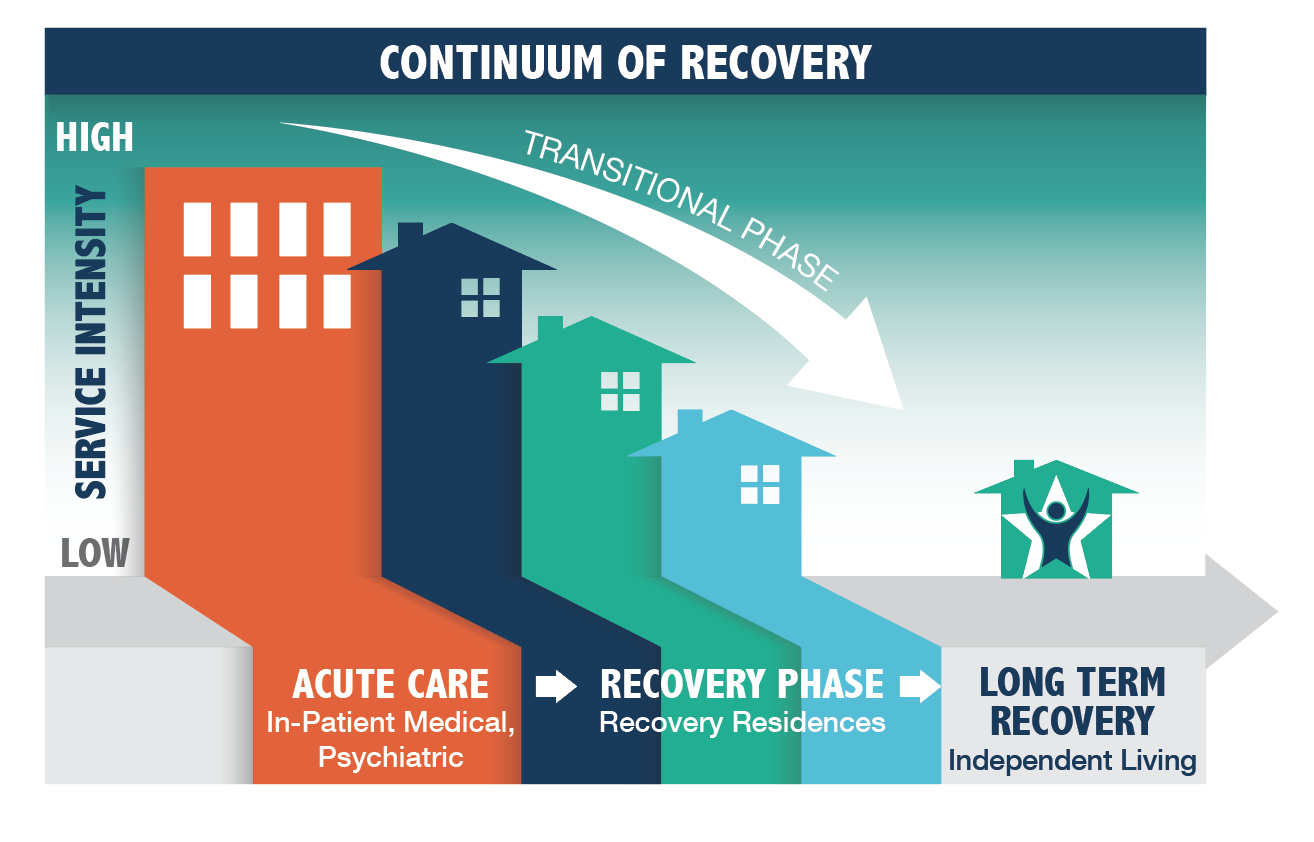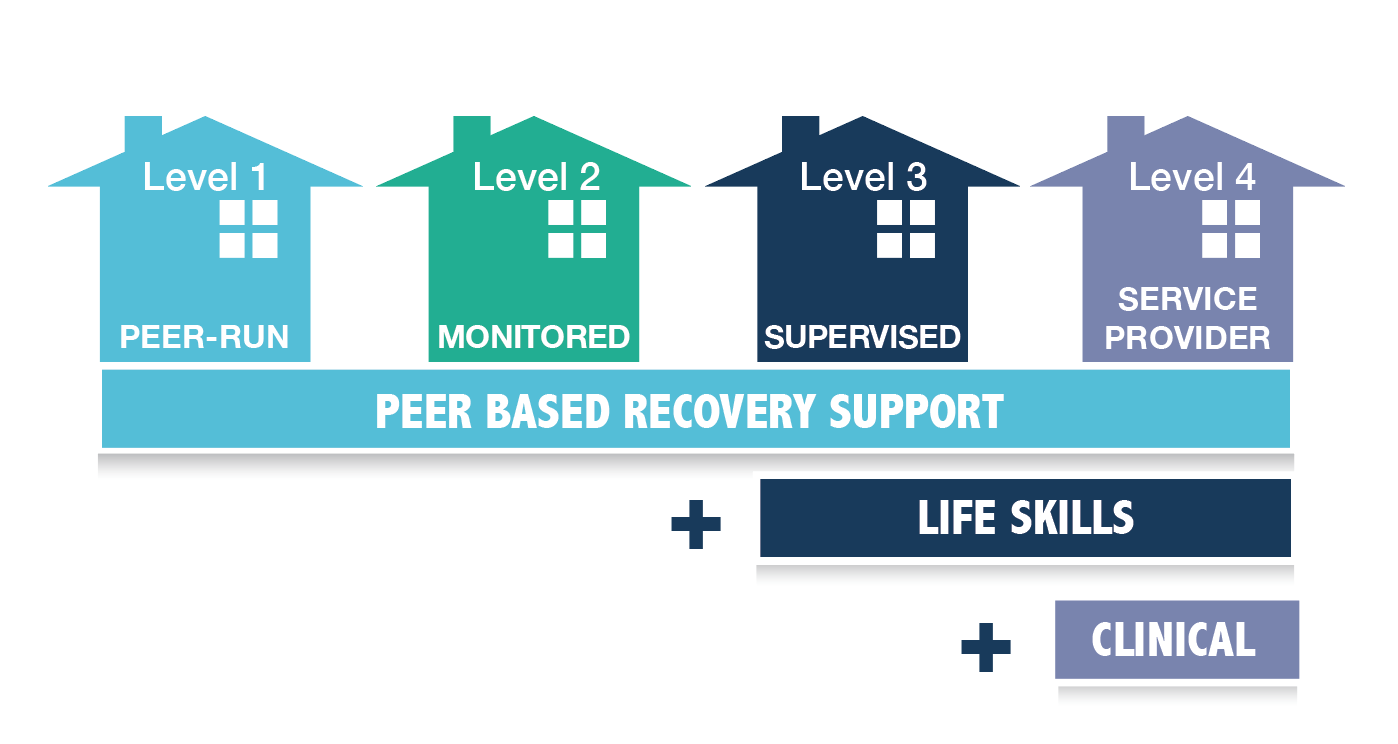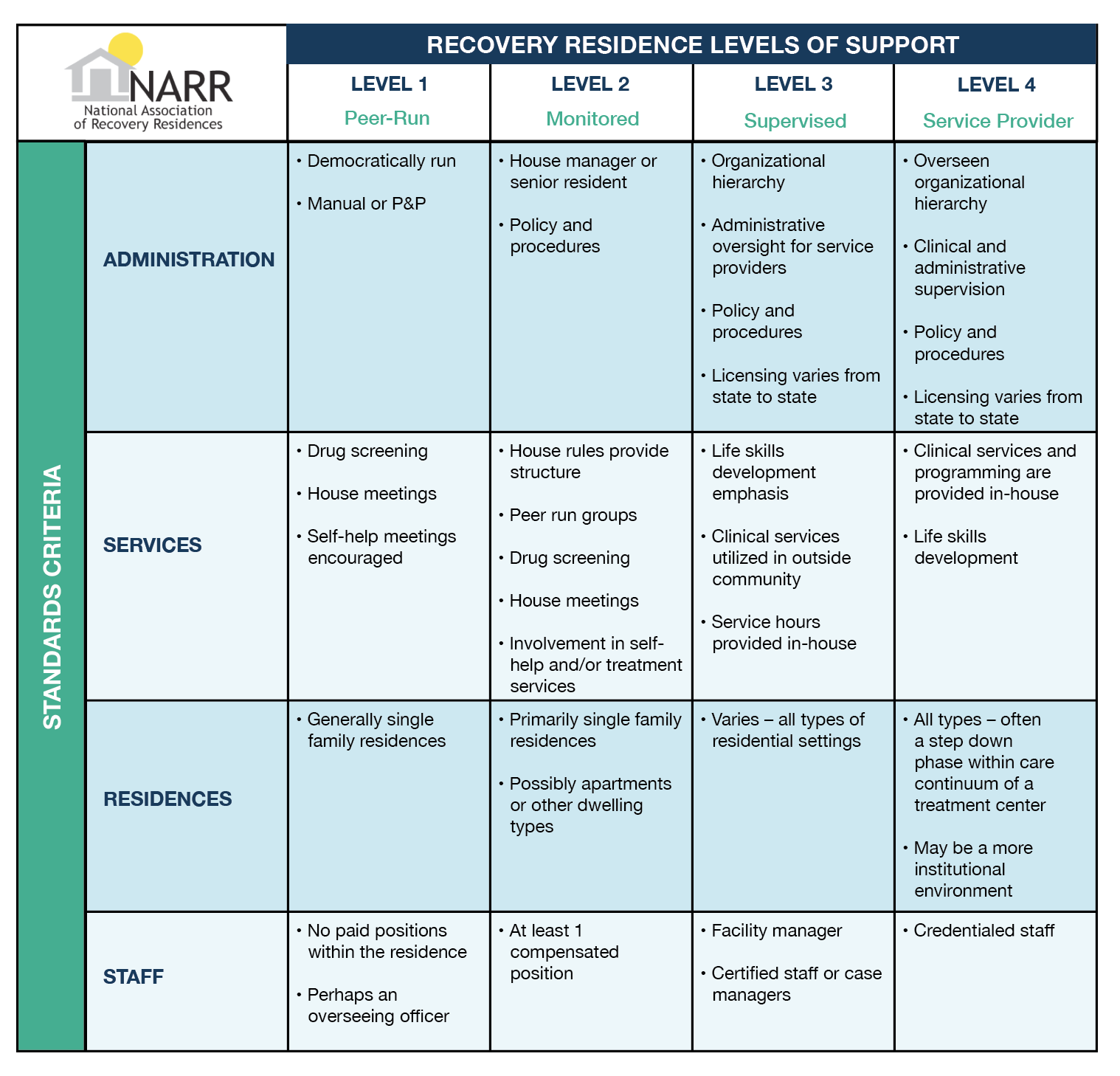
Whether you are seeking help for yourself, a family member, or a friend, finding the right approach for a substance use problem or addiction can be overwhelming and confusing. The words “treatment” and “recovery” are often used interchangeably. Actually, “treatment” and “recovery” are two different things. Treatment facilities are institutional in nature, are part of a larger organizational structure (like a hospital or licensed behavioral health center), and offer clinical and/or medical care for patients provided by appropriately licensed staff. Treatment services includes Detox Centers, Crisis Stabilization Units (CSUs), inpatient residential programs, and non-residential outpatient services, such as Medication Assisted Treatment (MAT) programs and counseling services. These programs are often time-limited and covered by the patient’s insurance.
Recovery programs, which include recovery residences, are typically non-clinical in nature and focus on supporting a person in achieving and maintaining long-term recovery. A “recovery residence” is a broad term describing a sober, safe, and healthy living environment that promotes recovery from alcohol and other drug use and associated problems. Many thousands exist in the United States that vary in size, organization, and target population. Other common names for recovery residences are “sober living homes,” “halfway houses,” “recovery houses,” etc. The purpose of a recovery residence is to provide a safe and healthy living environment to initiate and sustain recovery—defined as abstinence from alcohol and other non-prescribed drug use and improvement in one’s physical, mental, spiritual, and social wellbeing. Individuals build resources while living in a recovery residence that will continue to support their recovery as they transition to living independently and productively in the community. Many recovery residences (but not all) require participation in either a detox and/or inpatient treatment program, or a specified length of “sobriety time,” as a pre-requisite for admission. Some recovery residences are funded through grants or contracts and others are self-paid by the resident.
Recovery residences are divided into four Levels of Support based on the type, intensity, and duration of support that they offer (see graphics below). The NARR Standards define minimum services for each Level of Support, but additional services may be provided at each level. Higher NARR Levels of Support are associated with higher levels of need for structure and support. Lower NARR Levels of Support are associated with lower levels of need for structure and support. For example, if someone has been using illicit drugs for an extended period of time, has a history of multiple overdoses, and low recovery capital, they probably need a higher level of structure and support to succeed in their recovery journey. If, on the other hand, someone has been abstinent from drugs and alcohol for 8-10 months, has a sponsor, is actively working a program of recovery, and is just looking for a little added recovery support, a lower Level of Support might be more appropriate for them.
While services vary from level to level and residence to residence, at a minimum, recovery residences offer peer-to-peer recovery support (social model recovery) and promote abstinence-based, long-term recovery. Recovery residences are sober living environments, meaning that residents are expected to abstain from alcohol and illegal drug use. Each WVARR-certified recovery residence publishes policies on relapse sanctions and readmission criteria and other rules governing group living. Recovery residences may require abstinence from particular types of medications according to their individual policy. While some recovery residences do offer professionally delivered clinical services, typically those services are outsourced from contracted licensed professionals or offered off-site. If clinical services are offered as part of a recovery residence program, the resident must maintain freedom of choice regarding the chosen provider and the services they receive.
To learn more about recovery residences, check out A Primer on Recovery Residences: FAQs from the National Association of Recovery Residences.
A primer on recovery residences: Frequently asked questions. (2012). National Association of Recovery Residences. Accessible at www.narronline.com.
To learn more about “recovery capital,” check out William White and William Cloud’s Recovery Capital: A Primer for Addictions Professionals.


